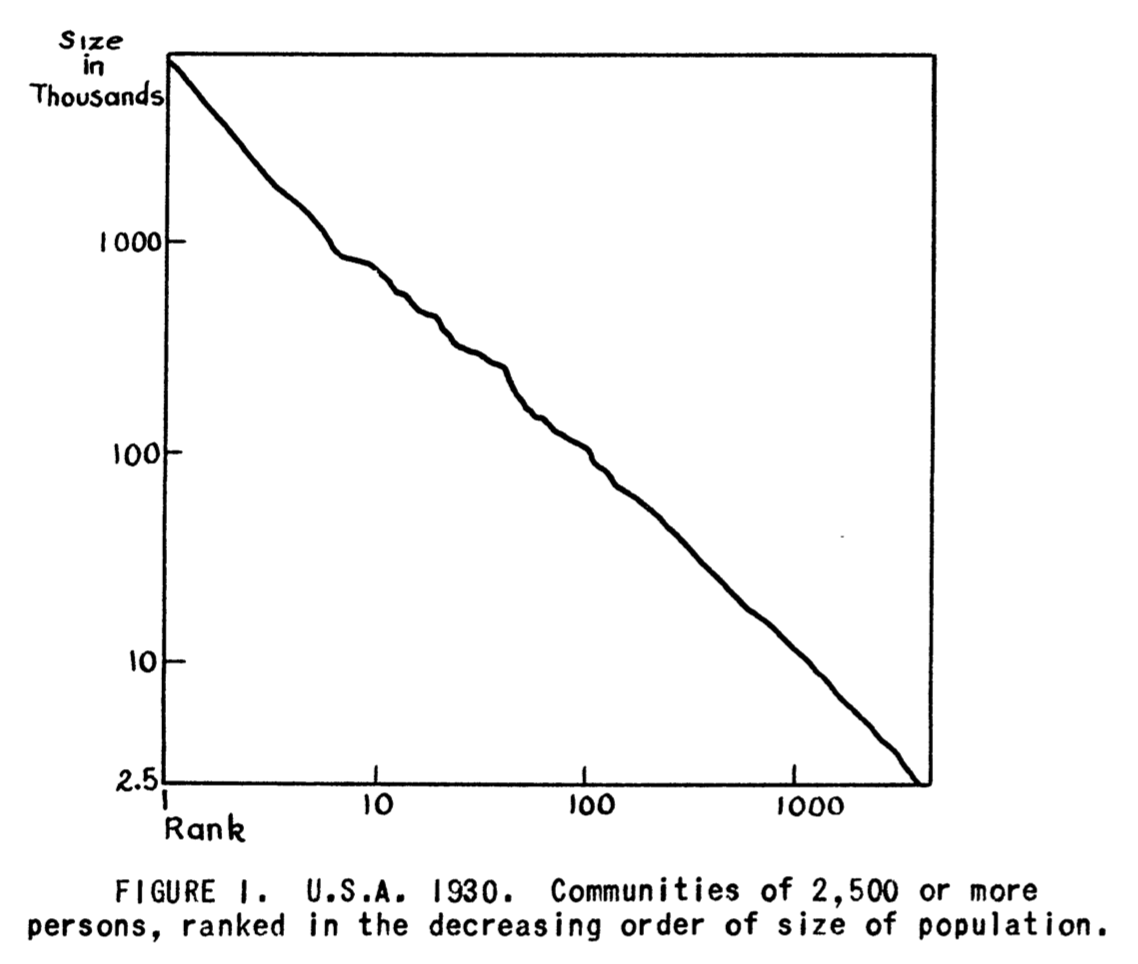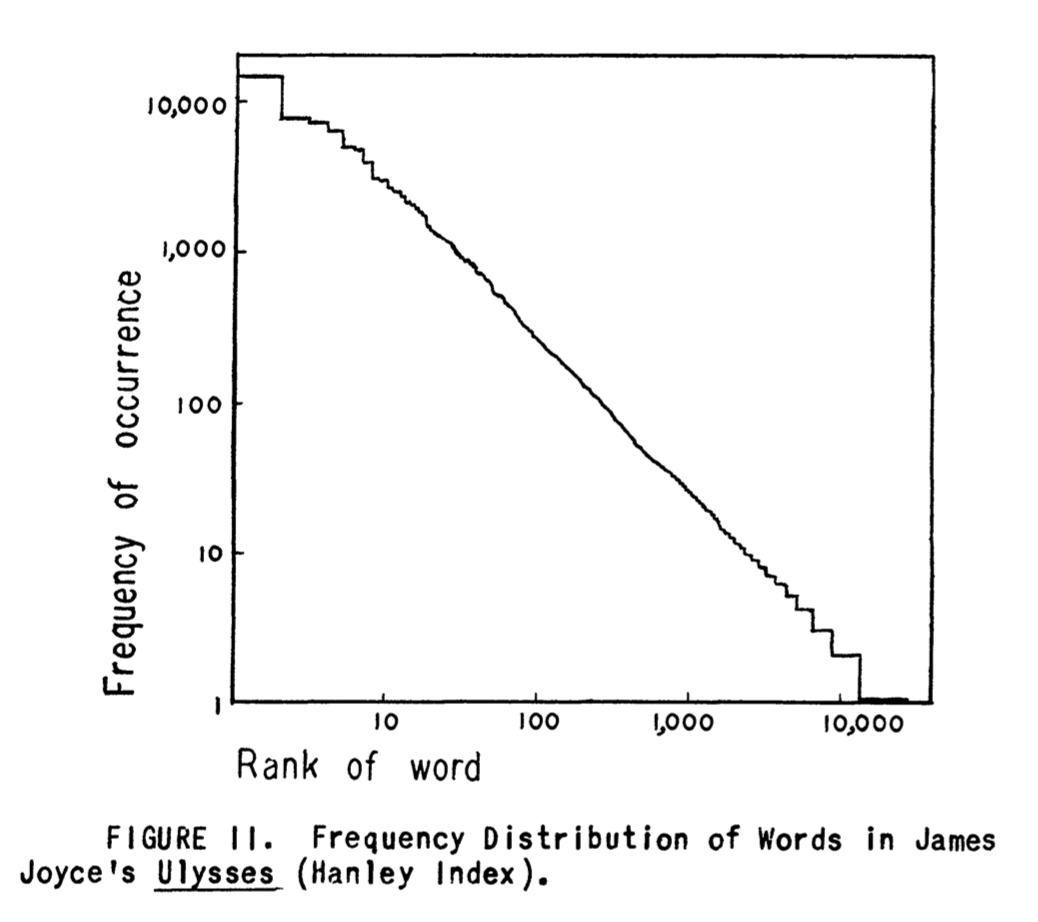theme: social_physics
theme: social_physics
The Unity of Nature
1942

FIGURE I. U.S.A. 1930. Communities of 2,500 or more persons, ranked in the decreasing order of size of population.
(Zipf, 1942)
FIGURE II. Frequency Distribution of Words in James Joyce's Ulysses (Hlanley Index).
(Zipf, 1942)the same natural law governs the structure and behavior of our planet, of life on our planet, and indeed, of even the smallest minutiae of living activity including the most subtle emotional and intellectual elaborations of the human mind
(Zipf, 1942)Zipf found that the same power law distribution held in other languages too, and not only for syllables but also for words and phrases. In each case, the frequency of use of an element of language was inversely proportional to the rank of its frequency. In English, for example, Zipf found by examining texts as different as the King James Bible and James Joyce’s Ulysses that ‘the’ is the most frequently used word in the language, which is twice as common as the second most frequently used word, ‘of,’ and three times as common as the third most frequently used word, ‘and.’ After Zipf was appointed as University Lecturer, he took his original finding and in true social physics fashion applied it to other social phenomena. In this he was guided by his faith in monism.
(Barnes & Wilson, 2014)Barnes, T. J. and Wilson, M. W. (2014) ‘Big Data, social physics, and spatial analysis: The early years’, Big Data & Society, 1(1), pp. 1–14. [link]
Zipf, G. K. (1942) ‘The Unity of Nature, Least-Action, and Natural Social Science’, Sociometry. American Sociological Association, 5(1), pp. 48–62. [link]
theme: social_physics
theme: social_physics